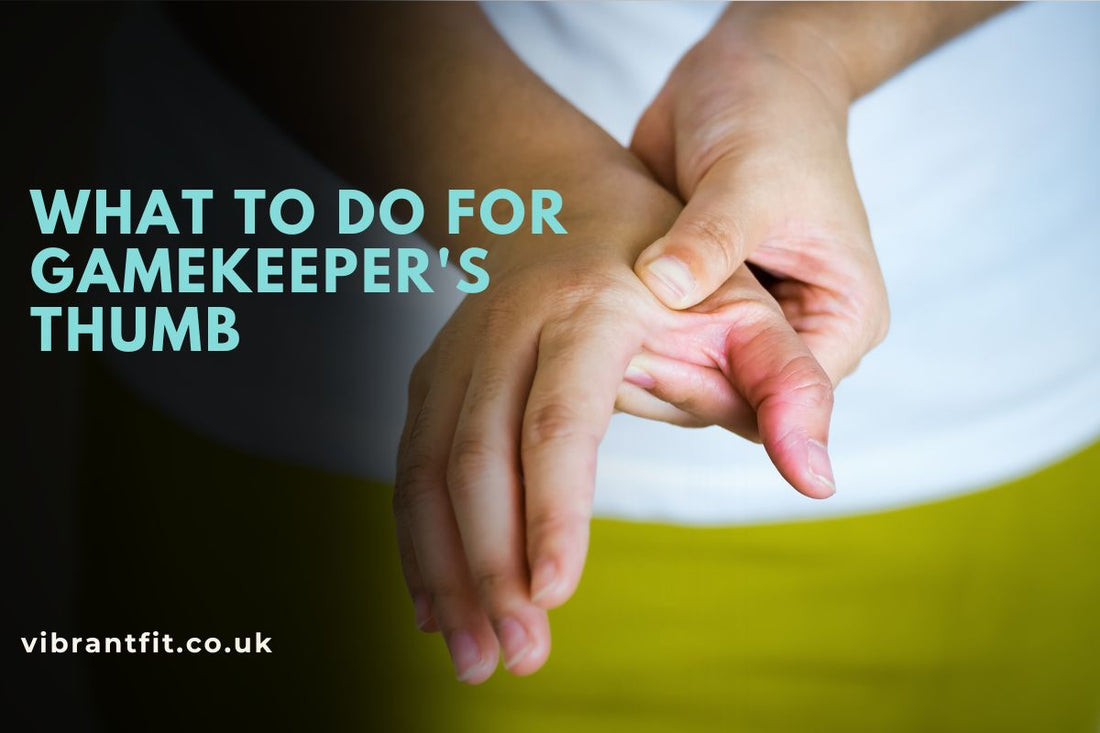
What is Gamekeeper's Thumb?
Share
Gamekeeper's Thumb is a common injury that affects the ligament at the base of your thumb. It can cause pain, swelling, and a weak grip. In this guide, you’ll learn what causes it, how to spot the symptoms, and the best ways to treat and prevent it.
What Is Gamekeeper's Thumb?

Gamekeeper’s Thumb is an injury to a strong band of tissue called the ulnar collateral ligament, or UCL. This ligament sits at the base of your thumb, helping to keep it stable when you grip, pinch, or hold something tightly. Damage to the UCL makes your thumb feel weak or unstable. You may find it difficult to grasp objects, open jars, or even button a shirt. Left untreated, the injury can lead to chronic instability, so it’s important to understand what’s happening.
Gamekeeper’s Thumb vs. Skier’s Thumb
The two terms are often used together, but they come from different types of injury. Gamekeeper’s Thumb is usually from repeated stress. Skier’s Thumb happens from a single, forceful injury. Think of a gamekeeper handling small animals every day, gradually wearing down their thumb ligament. Compare that to a skier falling with a pole in hand, causing the thumb to snap backwards.
Key differences:
-
Cause: Repetitive strain (Gamekeeper) vs. sudden trauma (Skier)
-
Type of injury: Chronic overuse vs. acute tear
-
Sports: Common in fighting and climbing vs. skiing accidents
-
Affected ligament: UCL in both cases
Causes and Risk Factors
This injury doesn’t just happen on ski slopes. It can occur in many ways. The ligament may wear down slowly over time. Or it might rupture all at once from an accident. Either way, the result is painful and limiting.
Common causes:
-
Falling with your hand stretched out
-
Gripping or twisting objects with force
-
Sports like skiing, wrestling, or rock climbing
-
Using tools that require repetitive thumb movement
-
Thumb injuries from sudden jerks or torque
Symptoms of Gamekeeper’s Thumb

Sometimes the symptoms show up right away. Other times, they develop gradually. You might not notice until your thumb starts struggling with simple tasks.
Symptoms include:
-
Pain at the base of the thumb
-
Swelling or bruising around the joint
-
Weakness when gripping or pinching
-
Difficulty holding objects firmly
-
Thumb leaning away from the hand
Treatment Options
The treatment depends on how badly the ligament is hurt. Minor tears may heal with rest and splinting. Complete ruptures often need surgery. The goal is always the same—restoring thumb stability and function.
Treatment includes:
-
Applying ice to reduce swelling
-
Taking over-the-counter pain relievers
-
Wearing a thumb splint or cast
-
Avoiding strenuous thumb use
-
Surgery for full ligament tears
Most people start with conservative care. But if symptoms persist, surgery becomes the next step.
Use of Splints or Braces

Need extra support while your thumb heals? Start with the ErgoThumb Spica Splint. It’s soft, breathable, and keeps your thumb steady without locking up your whole hand. If you prefer something you can adjust as swelling goes down, try the Adjustable Splint. It gives you control over the fit and pressure. For more stability, the Solid Support Splint is a great option when your thumb feels weak or wobbly. Each one is easy to wear, even all day. They’re simple, effective, and made to help you heal faster.
When Surgery Is Required
Surgery is reserved for more serious injuries. If the ligament is fully torn or if a small piece of bone has broken off with it, a procedure may be needed. Surgeons reattach the ligament using tiny anchors or sutures. Recovery takes time—often several weeks in a cast, followed by hand therapy. But with the right approach, most people regain full thumb function.
Also read : What is Flaccid Paralysis
Summary
Gamekeeper’s Thumb is more than just a minor sprain. It’s a ligament injury that can disrupt your grip and everyday life. Whether caused by repetitive motion or a sudden fall, this condition needs attention. Early diagnosis, the right support, and a clear treatment plan make all the difference. With proper care, your thumb can get back to full strength.
